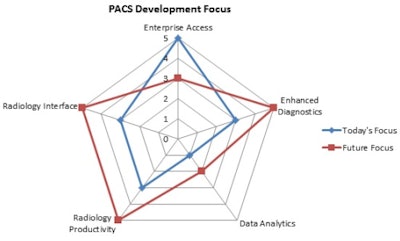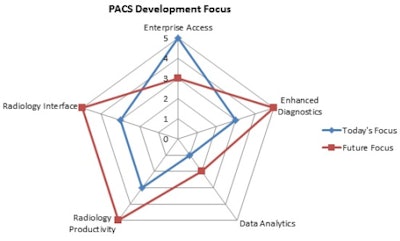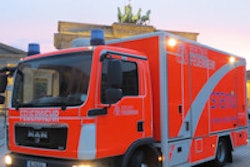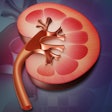
After focusing on enterprise IT (vendor-neutral archiving, electronic medical record integration, cloud storage, and advanced analytics) during the last three years with limited success, there are renewed calls for PACS to return to a focus on radiology. In particular, PACS product development needs to be realigned with radiologists' current and future requirements, including the need for improved productivity and enhanced diagnostic capabilities.
During the past three years, PACS has provided, or at least has attempted to provide, enterprise functionality, including enterprise archiving, universal access, and analytics. However, the failings of PACS enterprise functions were exposed as workflow became more complex, requiring true application interoperability. In addition, new data sharing protocols and economic pressures could not cope with rising storage volumes and the subsequently large data handling costs.
Today's PACS challenge is to choose which enterprise and analytics component, if any, can be reliably delivered by PACS, and ensuring PACS works well with the third-party systems that are better able to deliver on certain functions. Indeed, there is a strong case for PACS to withdraw all proprietary enterprise access and analytics functions, allowing middleware specialities to tackle these while the PACS provides a stronger front end. In other words, there is no need for any PACS to try to be a vendor-neutral archive and advanced visualization tool, as well an enterprise analytics engine. Moreover, these are not the major requirements of their core users -- radiologists. However, as IT purchasing power increasingly goes toward the enterprise, PACS suppliers stand the risk of neglecting their core users by trying to appease their new partners.
Rather, there is a need for PACS to come back to radiology by reducing the time radiologists have to spend analyzing images, improving and streamlining the user interface, and enhancing diagnostics. Productivity gains, for example, are achieved via sophisticated hanging protocols that predetermine optimal image presentation, and intelligent systems that learn and help repeat a user's preferred workflow per study type. Research and development efforts should focus on introducing such features that improve radiologist's productivity and make PACS easier to use.
 Fig. 1. All images courtesy of InMedica.
Fig. 1. All images courtesy of InMedica.In the advanced diagnostics field, technology barriers continue to be broken -- techniques which were previously considered advanced visualization (AV), including maximum intensity projection (MIP) and multiplanar reconstruction (MPR), are now increasingly being incorporated into imaging systems as standard. This has proven valuable to both clinicians and radiologists as a diagnostic aid, to improve confidence and for preoperative planning. Where a third-party system is available, and PACS in itself does not provide advanced visualization tools, then the key is integration -- the ability to seamlessly access and apply AV from PACS as though they were one complete solution. However, third-party AV is not necessarily the answer, and as radiologists increasingly use advanced visualization tools, some AV functions will be delivered by PACS. The key is to define the threshold between tools required routinely and those only needed for advanced analysis in a smaller number of cases. Increasingly, radiologists are performing 3D cross-referencing and postprocessing for CT, PET/CT, MPR, and MIP. It is those tools that PACS should increasingly incorporate, while leaving more advanced diagnostic analysis to third-party systems.
 Fig. 2: Key strengths of different imaging informatics software. Overlap indicates required combination of products to achieve combined benefits.
Fig. 2: Key strengths of different imaging informatics software. Overlap indicates required combination of products to achieve combined benefits.The combinations of PACS and third-party systems achieves radiology and enterprise benefits through a best-of-breed, application-neutral environment (figure 2). Best-of-breed here refers to systems, not vendors -- there is a whole different debate as to whether any one vendor can provide more than one best-of-breed system. It is this author's opinion that it can be achieved -- so long as application independence and interoperability can be clearly proved. That, however, distracts from the core of the argument -- for PACS to refocus on what it is good at: helping radiologists perform their work better.
Theo Ahadome is a senior market analyst in the healthcare IT research group at InMedica, a division of IHS (NYSE:IHS). InMedica is a leading provider of market research and consultancy in the medical electronics industry (www.in-medica.com).
Originally published in ECR Today on 10 March 2013.
Copyright © 2013 European Society of Radiology



















